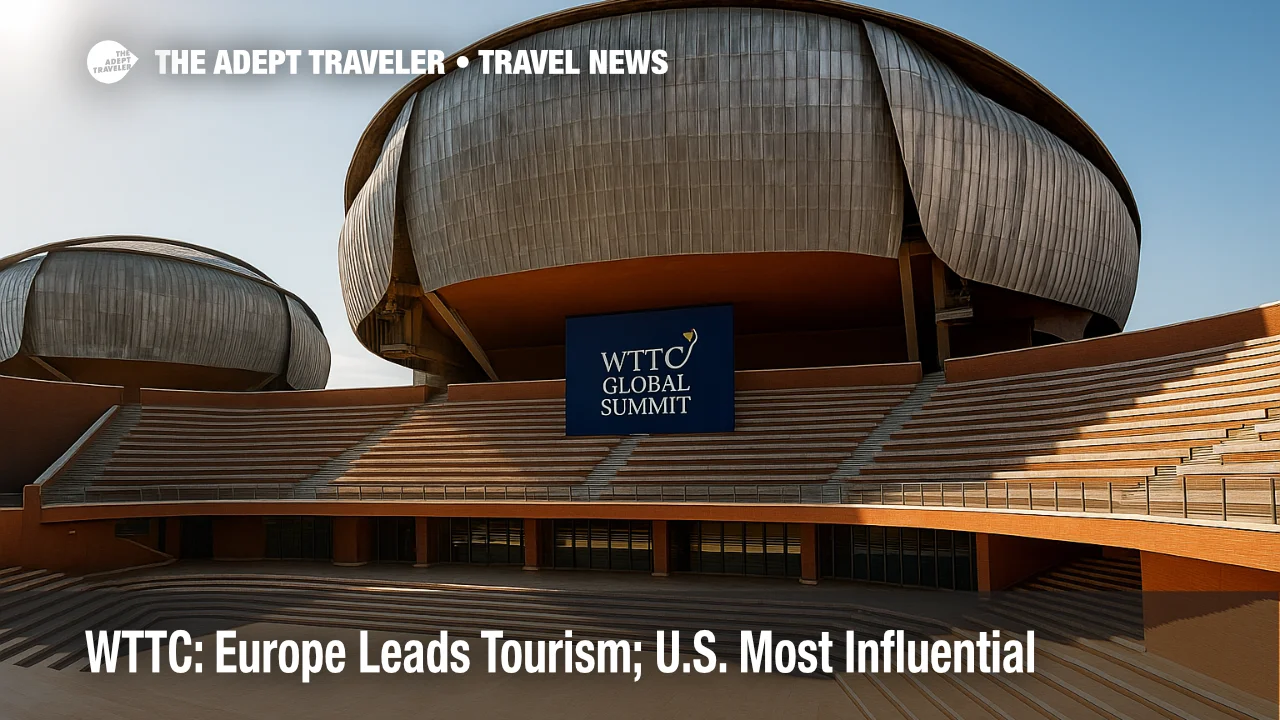Europe powers tourism as U.S. remains most influential, WTTC says

Europe continues to anchor international tourism while the United States holds the title of the most influential travel and tourism market, according to new WTTC research released at the council's 25th Global Summit in Rome. The summit also marked a leadership shift, with Manfredi Lefebvre, executive chairman of Heritage Group and Abercrombie & Kent Travel Group, appointed as the WTTC's new chair, succeeding Greg O'Hara. WTTC forecasts the sector will surpass pre-pandemic highs in 2025 as policy and investment decisions shape competitiveness across regions.
Key points
- Why it matters: WTTC projects a record global contribution of about $2.1 trillion in 2025.
- Travel impact: Europe leads on international demand; the U.S. drives scale via its domestic market.
- What's next: U.S. competitiveness hinges on destination marketing, traveler-friendly policies, and visa reforms.
- Italy's sector hit $248.3 billion in 2024, helped by strong events and international spend.
- Manfredi Lefebvre becomes WTTC chair, following Greg O'Hara's term.
Snapshot
WTTC's latest report frames a two-track expansion. Europe remains the "beating heart" of international travel with France, Spain, Germany, the United Kingdom, and Italy all ranking among the top 10 travel and tourism economies by GDP contribution. The United States remains the world's largest and most influential market, contributing $2.6 trillion in 2024, buoyed by an exceptionally strong domestic base that sustains jobs and resilience. WTTC warns, however, that international visitor spending in the U.S. could fall by $12.5 billion in 2025 without renewed destination promotion, easier visas, and traveler-friendly policies. Globally, the sector is forecast to contribute about $2.1 trillion in 2025, exceeding 2019 by roughly $164 billion as China rebounds and Middle Eastern, Asian, and African destinations post record growth.
Background
The WTTC convened its 25th Global Summit in Rome from September 28-30, 2025, spotlighting Italy's role as a G7 economy with a growing meetings and events engine. Italy's travel and tourism GDP contribution reached $248.3 billion in 2024, part of a European surge that also includes France at more than $289 billion and Spain at $270 billion. Beyond Europe, China delivered $1.64 trillion in 2024 and is forecast to jump 22.7 percent in 2025. Japan contributed $310.5 billion last year. Against this backdrop, Manfredi Lefebvre-best known for growing Silversea Cruises prior to its sale to Royal Caribbean Group-was named WTTC chair at the summit's opening ceremony.
Latest developments
U.S. stays on top, but international spend is the weak link
WTTC's league table shows the U.S. contributed $2.6 trillion to GDP in 2024, maintaining its position as the world's largest travel and tourism market. The council cautions that international visitor spending in the U.S. is set to decline by $12.5 billion in 2025, leaving total-sector growth at about 0.7 percent. Industry leaders say competitive edge will depend on restoring destination marketing budgets, lowering visa frictions, and smoothing the traveler journey at borders and airports. Relatedly, operational friction points continue to make news, from airport technology outages to airline policy shifts, underscoring how facilitation choices can ripple through demand and satisfaction. For additional context, see Adept Travel's coverage of a recent border-processing outage in Canada, which snarled arrivals across multiple hubs, and cruise-sector moves to boost loyalty value across brands: Canada arrivals kiosks outage delays, NCLH loyalty status match.
Europe's momentum widens the gap in international demand
Europe's top markets combined heritage assets with rising capital investment and a robust meetings and events calendar. France generated over $289 billion from travel and tourism in 2024, while Spain added $270 billion. Germany contributed $525 billion, the United Kingdom $367 billion, and Italy $248.3 billion. WTTC emphasized that Europe's return to center stage reflects both demand and policy coordination, including visa streamlining and promotion efforts that capture long-haul and intra-European trips. The council's 2025 projection suggests Europe will remain the world's most competitive region for international receipts as airports, ports, and destinations accelerate upgrades.
China's rebound and Middle East growth set the pace in 2025
China, the world's second-largest market, contributed $1.64 trillion in 2024 and is forecast to add about $260 billion in 2025, a 22.7 percent surge. Japan is expected to climb from $310.5 billion in 2024 to nearly $325 billion this year as inbound tourism remains strong. The Middle East continues a multi-year investment cycle across airports, cruise terminals, and hospitality, led by Saudi Arabia's large-scale projects. WTTC estimates travel and tourism supported 357 million jobs in 2024, and could reach 371 million in 2025, with Asia-Pacific capturing a large share of new roles.
Analysis
For U.S. stakeholders, the signal is clear: the domestic engine remains unmatched, but the international demand gap is widening. Visa wait times, interview availability, reciprocity, and funding for destination marketing are policy levers that can move the needle on inbound spend. Airports and border agencies can also shape outcomes through technology resilience and staffing, as recent processing outages illustrated. Europe's lead in international receipts stems from visa policy alignment, promotion, and dense air and rail networks that convert intent into trips. Meanwhile, China's return, paired with sustained Middle Eastern investment, will redirect long-haul flows in 2025. For destinations, this favors strategies that hedge across source markets, diversify aviation partnerships, and invest in events that anchor shoulder-season demand. Brands should also lean into cross-portfolio loyalty and facilitation initiatives that lower friction and raise lifetime value, mirroring moves already underway in cruising and airlines.
Final thoughts
WTTC's Rome summit frames a competitive year ahead. Europe is powering international demand, China is surging, and the Middle East is scaling fast. The U.S. remains the most influential travel and tourism market by size, but inbound competitiveness will hinge on visa, marketing, and facilitation choices made now. For destinations and suppliers, aligning policy with product will determine who captures the next wave of growth. Travelers, too, will feel the benefits where friction drops first-another reason to watch Europe's momentum and U.S. policy shifts around the primary keyword, WTTC Rome summit.
